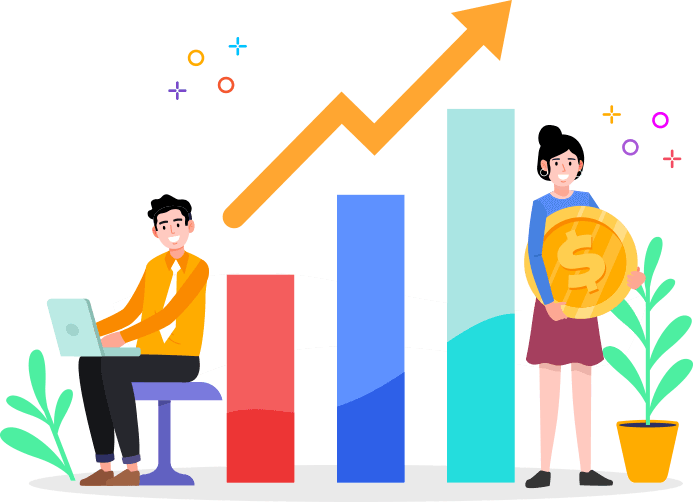- September 28, 2024
- by admin
- On-Page SEO
- 2 Comments
Internal linking is a crucial element of any successful on-page SEO strategy. It involves linking pages within your website, allowing both users and search engines to navigate your content easily. When used effectively, internal links help distribute authority across your pages, boosting your site’s SEO performance and helping to build topical relevance around your chosen subjects.
By connecting related content, such as blog posts, service pages, and key resources, internal linking not only enhances the user experience but also strengthens your website’s structure in the eyes of search engines. For instance, when you link to valuable content, like a blog post on meta tags in on-page SEO, it signals to search engines that your website contains detailed information across interconnected topics, improving your rankings and overall authority in the SEO space.
Why Internal Linking is Crucial for On-Page SEO

Internal linking is a fundamental aspect of any effective SEO strategy. By linking different pages within your website, you help search engines understand the structure and hierarchy of your content. Not only does this improve on-page SEO, but it also enhances the user experience by making it easier to navigate through related topics.
For instance, by linking to resources like What Are LSI Keywords or Meta Tags in On-Page SEO, you guide both users and search engines to deeper, more relevant content. This also helps spread “link juice” across your site, which improves the page ranking of linked pages. Additionally, well-placed internal links signal to search engines that these pages are essential, helping improve visibility across your website.
Enhancing Content Hierarchy and Authority Through Internal Links
Internal linking is not just about navigation; it plays a crucial role in shaping your content hierarchy and establishing content authority. By linking relevant pieces of content together, you allow both users and search engines to understand the relationship between different pages on your site. For example, linking your on-page SEO services page to your blog articles enhances the topical depth of your site and boosts the authority of both the service and the content pages.
A well-structured internal linking strategy also involves using optimized anchor text. Instead of generic phrases like “click here,” it’s more effective to use specific keywords that describe the linked content. For instance, if you are discussing LSI keywords or semantic keywords, you might naturally link to your dedicated guide on what are LSI keywords to provide more context. This strengthens the content’s relevance and improves the chances of ranking for those specific search terms.
By optimizing your internal linking and anchor text, you help distribute content authority across your site, making it easier for search engines to crawl and index your pages effectively.
Structuring Internal Links for Maximum SEO Benefits
Building an effective internal link structure plays a key role in boosting your overall SEO performance. A well-organized structure ensures that your content flows naturally across different pages, guiding both users and search engines to relevant resources. By doing this, you enable link-building strategies that help distribute page authority, which leads to significant page ranking improvement over time.
When crafting internal links within blog posts, it’s essential to connect to related content pages and resources, making sure the context is clear. For example, if you have a keyword research service page, linking to it naturally within a blog post about SEO strategies helps users discover related services and strengthens the topical relevance across your site.
To improve your internal linking, start by focusing on high-value service or resource pages. Spread links throughout your articles, particularly where they provide valuable additional context for readers. Remember, effective internal linking helps distribute link juice, and when done strategically, it enhances not just individual page rankings but your entire site’s SEO strength.
Leveraging Meta Tags and LSI Keywords for Better Internal Linking
Meta tags and LSI keywords play an essential role in refining your internal linking strategy. Properly optimized meta tags in on-page SEO not only help search engines understand the context of your pages but also improve user engagement. By effectively using meta tags, you guide users and search engines through your website more efficiently, connecting relevant pages and content.
Additionally, LSI and semantic keywords enhance your internal linking structure by providing contextually related terms that make linking between pages more natural. For instance, when discussing what are LSI keywords within your blog posts or service pages, you can strategically link to related articles such as “Meta Tags in On-Page SEO” or “LSI and Semantic Keywords.” This creates a cohesive flow of content that helps users dive deeper into topics while signaling topical relevance to search engines.
By ensuring that each internal link is contextually placed and supported by LSI keywords, you’ll create an interwoven network of pages that share authority and drive both user experience and SEO performance. When executed correctly, this strategy boosts the discoverability of all your pages, improving rankings and overall website authority.
Using Internal Linking to Improve Keyword Research and On-Page SEO

Internal linking is a key element when it comes to enhancing your keyword research services and on-page SEO services pages. It allows you to effectively distribute link equity across your site, improving the authority of important pages while guiding users through related topics.
By linking your keyword research services page within articles focused on SEO strategies or keyword hierarchy, you can position it as a go-to resource for readers interested in diving deeper into these areas. For example, when discussing keyword strategy, naturally link to the on-page SEO services page to emphasize how effective keyword research ties into optimizing on-page elements like meta tags and content structure.
This approach not only improves your on-page SEO by creating a well-linked network of pages but also strengthens the overall keyword hierarchy on your site. By ensuring each link is placed naturally within relevant content sections, you allow search engines to better understand the relationship between your pages, which can boost your rankings for target keywords.
For instance, while discussing the importance of on-page SEO services, you can mention how well-researched keywords are critical for structuring your meta tags and page content, linking back to your keyword research services page. This interlinking between sections helps spread topical authority and ensures that users and search engines find valuable connections between your services and content offerings.
Best Practices for Internal Linking: Dos and Don'ts
Internal linking is essential for both crawlability and helping search engine crawlers navigate and index your site efficiently. To ensure you’re using internal links effectively, here are some dos and don’ts to follow.
Dos:
Create a well-organized internal link structure: Your website should have a logical hierarchy, with important pages (like your service or product pages) receiving the most internal links. This structure helps search engines understand the relative importance of each page.
Use contextual links: When linking, make sure the anchor text is relevant to the content it’s linking to. For example, if you’re discussing on-page SEO services, link naturally to related content like keyword research or meta tag optimization. Contextual links add more value to both users and search engines.
Improve crawlability: Internal links help search engines discover new content faster. When your links are strategically placed across different pages, it enables search engine crawlers to index your site more effectively. This is especially important for large websites.
Don’ts:
Avoid overstuffing keywords in links: While it’s essential to use keywords in your anchor text, overdoing it can make the content feel forced and artificial. Stick to naturally fitting anchor texts that make sense in the context of the sentence. For example, instead of stuffing “best keyword research services” repeatedly, use variations like “explore keyword research.”
Don’t overuse internal links: While internal linking is helpful, too many links can overwhelm both users and search engines. Ensure each internal link adds value by leading to genuinely related content. For instance, linking to the crawlability of your site from a blog post on SEO audits is relevant, but linking to an unrelated service page may not be.
How to Monitor and Optimize Internal Linking for SEO Success

To ensure your internal linking strategy is effective, it’s essential to monitor and optimize your links using SEO audit tools and link optimization tools like Ahrefs and SEMrush. These tools can help you analyze your internal link structure, identify areas for improvement, and track the impact on your SERP rankings.
Monitoring Internal Links with SEO Audit Tools
Using tools such as Ahrefs or SEMrush for an SEO audit provides valuable insights into how well your internal links are performing. These tools identify broken links, orphaned pages (pages with no incoming links), and underlinked important pages. By fixing these issues, you enhance your site’s overall crawlability and ensure search engines like Google can index all of your important content.
For example, Ahrefs allows you to see the number of internal links pointing to a page and how much link equity, or “link juice,” is being passed to that page. This enables you to adjust and ensure key pages are getting the internal links they need to rank well.
Optimizing Internal Links to Boost SERP Rankings
Link optimization goes beyond just adding internal links. It’s about strategically placing them where they’ll have the most impact. By linking from high-authority pages to those with less authority, you help to improve the rankings of those lower-tier pages, ultimately boosting their visibility on the SERP.
For instance, if you’ve published a high-traffic blog post, it’s a great idea to link from there to your on-page SEO services page. This helps distribute link equity to your service pages, improving their chances of ranking higher in search results.
Continuous Optimization for SEO Success
Regularly monitoring your internal links and ensuring they are optimized is critical for maintaining a successful SEO strategy. Regular audits help you stay on top of any changes and ensure your internal links are working in your favor. As we have seen in our experience with clients, continual refinement of internal links contributes to consistent growth in rankings and organic traffic.
Common Mistakes in Internal Linking and How to Avoid Them

While internal linking can greatly improve your website’s SEO, there are some common mistakes that can undermine your efforts. Understanding these errors and how to avoid them will help you maintain a strong website architecture and boost your site’s overall SEO performance.
1. Incorrect Keyword Relevance
One of the most common mistakes is using internal links with keywords that aren’t relevant to the linked page. For example, linking a service page about on-page SEO services using a keyword that relates to a blog post about keyword research services confuses both users and search engines. This lack of keyword relevance dilutes the authority of the internal link and weakens your SEO strategy.
Solution: Always ensure that the anchor text matches the content and intent of the linked page. Use keywords that are naturally connected to the content you’re linking to, maintaining a logical flow. For example, if you are linking to a post on meta tags, the anchor text should reflect terms like “importance of meta tags in on-page SEO.”
2. Over-Linking or Under-Linking Important Pages
Another common mistake is either overwhelming a page with too many internal links or not linking enough to important pages. Over-linking can make the page look spammy and difficult for search engines to properly assess, while under-linking crucial pages can limit their page interlinking potential and SEO value.
Solution: Balance the number of links in your content. Focus on naturally linking to important pages throughout your website, such as linking key pages like on-page SEO services and keyword research services where relevant. Use tools like Ahrefs or SEMrush to identify which pages need more internal links for improved visibility.
3. Poor Website Architecture
Having a disorganized website architecture with no clear structure for internal links is a significant problem. Pages may become isolated, making it difficult for search engines and users to navigate. This can lead to poor crawlability, causing search engines to miss important pages or not fully index your content.
Solution: Build a clear, logical structure for your internal links. Group related content together, and create a hierarchical internal link structure that guides users and search engines from one topic to another. Regularly review your internal links using tools like Google Search Console to ensure your pages are properly linked.
By correcting these mistakes and focusing on maintaining keyword relevance, page interlinking, and well-structured website architecture, you can create a more effective internal linking strategy that boosts SEO and enhances user experience.
The Impact of Internal Linking on User Engagement and Organic Traffic

Internal linking plays a significant role in improving user engagement and boosting organic traffic. By directing users to other relevant pages within your website, internal links not only keep visitors engaged for longer but also guide them to discover more valuable content, reducing your bounce rate.
How Internal Linking Enhances User Engagement
When users come across internal links embedded in your content, they are more likely to click on them if the links are contextually relevant. This practice allows users to find additional information related to their interests without having to leave your website. For example, if a visitor is reading about meta tags in on-page SEO, linking to a related article like LSI and semantic keywords encourages them to explore further.
Increased user engagement signals to search engines that your content is valuable and informative, contributing to improved SEO rankings.
Boosting Organic Traffic Through Internal Links
By strategically distributing internal links, you create pathways for both users and search engines to navigate your site. This interlinking helps search engine crawlers discover and index more pages, leading to improved visibility in search results and a boost in organic traffic.
For example, linking from a high-traffic page, like a popular blog post, to a service page such as on-page SEO services, helps distribute traffic across your site. Users find themselves navigating from one piece of useful content to another, leading to increased organic traffic over time.
Reducing Bounce Rate with Effective Internal Linking
Internal linking can also help reduce your site’s bounce rate, which refers to the percentage of visitors who leave your site after viewing only one page. By offering relevant links to additional pages, such as linking a blog post about keyword research services to a related service page, you encourage visitors to stay longer and explore more content.
When visitors engage with multiple pages, it not only enhances their experience but also reduces your bounce rate. This reduction sends positive signals to search engines, improving your rankings and attracting even more traffic.
Creating a Content Cluster with Internal Linking

Content clusters are an effective strategy for organizing your website’s content in a way that enhances website navigation and builds content authority. By grouping related topics together through internal linking, you create a logical structure that both users and search engines can easily follow.
What Are Content Clusters?
A content cluster consists of a core “pillar” page that covers a broad topic comprehensively, surrounded by several related subtopic pages. These subtopic pages link back to the pillar page and to each other, creating a web of internal links that strengthens the authority of the entire cluster.
For example, a pillar page on on-page SEO services could be supported by related blog posts covering topics like meta tags in on-page SEO, LSI and semantic keywords, and keyword research services. By interlinking these pages, you guide users from one valuable piece of content to another, all while reinforcing the central theme of on-page SEO.
How Content Clusters Improve Website Navigation
Effective internal linking within content clusters enhances the user experience by providing clear navigation paths. When users can easily move between closely related topics, they are more likely to engage with multiple pages on your site. This reduces confusion and makes it simpler for users to find the information they are looking for, improving overall website navigation.
For instance, if a visitor is reading about what are LSI keywords, they can be directed to explore other important SEO topics, like meta tags or on-page SEO, through well-placed internal links. This not only boosts engagement but also signals to search engines that your site provides comprehensive coverage of the topic.
Strengthening Content Authority Through Internal Linking
By building content clusters with strong internal linking, you establish your site as a source of authoritative, well-organized content. Search engines recognize when related pages are properly linked, which can improve your search rankings for the central topic. This helps you become an authority in your niche, increasing your visibility in search results.
For example, linking a service page about on-page SEO services to a blog post on meta tags reinforces the idea that your site is a go-to resource for SEO-related topics. The more internally linked content you have within a content cluster, the stronger your site’s authority becomes in the eyes of both search engines and users.
Final Thoughts:
Maintaining a clean and well-organized internal link structure is crucial for ensuring a smooth website user flow. When internal links are structured strategically, users can easily navigate through related content, which keeps them engaged and on your website for longer periods.
Additionally, internal linking plays a significant role in improving page optimization. As you update or create new content, it’s essential to continuously evaluate your internal links to ensure they remain relevant and aligned with evolving SEO standards. This regular optimization helps search engines index your content more effectively, boosting your site’s rankings.
By focusing on internal link maintenance, you’re not only enhancing the user experience but also ensuring your SEO strategy stays ahead of the curve, helping to drive traffic and improve your website’s overall performance. This wraps up the section while naturally incorporating the keywords like website user flow, page optimization, and internal linking. Let me know if you’d like to refine this further!





Comments (02)